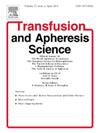MM患者自体移植后何时使用非格拉西汀?
IF 1.2
4区 医学
Q4 HEMATOLOGY
引用次数: 0
摘要
背景:多发性骨髓瘤(MM)患者自体干细胞移植后常规给予粒细胞集落刺激因子(G-CSF);然而,启动该计划的最佳时机仍不清楚。虽然以前的研究评估了异质性患者队列,包括MM、非霍奇金淋巴瘤和霍奇金淋巴瘤,但本研究仅关注MM患者。我们的目的是比较在移植后 + 1天或中性粒细胞减少症发作时启动G-CSF的结果,特别强调中性粒细胞和血小板植入时间,以帮助确定该患者群体的最佳G-CSF给药策略。研究设计与方法本回顾性研究纳入了2016年至2022年在İnönü图尔古特大学Özal医学中心血液学诊所接受自体造血干细胞移植的122例MM患者。患者平均分为两组。在第1组中,非格拉西汀在移植后第+ 1天开始使用,而在第2组中,非格拉西汀在出现中性粒细胞减少症后开始使用。比较各组间中性粒细胞和血小板植入时间以及抗生素使用情况。结果两组患者中性粒细胞、血小板植入次数及抗生素使用情况比较,差异均无统计学意义(p >; 0.05)。day + 1组中位中性粒细胞和血小板植入时间分别为14天和15天,中性粒细胞引导组中位中性粒细胞和血小板植入时间分别为15天和14天。然而,中性粒细胞减少组非格昔汀注射的中位数(8针,范围:6-12)明显低于天+ 1组(14针,范围:8 - 24)(p <; 0.001)。结论在骨髓移植患者出现中性粒细胞减少时启动G-CSF与早期(第1天)给予G-CSF同样有效。这种延迟策略不会对植入或抗生素需求产生不利影响,并显著减少G-CSF注射次数,在成本效益和减少副作用方面具有潜在的益处。本文章由计算机程序翻译,如有差异,请以英文原文为准。
When should I use filgrastim after autologous transplantation in MM patients?
Background
Granulocyte colony-stimulating factor (G-CSF) is routinely administered following autologous stem cell transplantation in patients with multiple myeloma (MM); however, the optimal timing for its initiation remains unclear. While previous studies have evaluated heterogeneous patient cohorts, including those with MM, Non-Hodgkin’s Lymphoma, and Hodgkin’s Lymphoma, this study focuses exclusively on MM patients. We aimed to compare the outcomes of initiating G-CSF either on day + 1 post-transplantation or upon the onset of neutropenia, with particular emphasis on neutrophil and platelet engraftment times, to help define an optimal G-CSF administration strategy in this patient population.
Study Design and Methods
This retrospective study included 122 MM patients who underwent autologous hematopoietic stem cell transplantation between 2016 and 2022 at the Hematology Clinic of İnönü University Turgut Özal Medical Center. Patients were evenly divided into two groups. In Group 1, filgrastim was initiated on day + 1 post-transplantation, while in Group 2, it was administered after the onset of neutropenia. Neutrophil and platelet engraftment times, as well as antibiotic usage, were compared between the groups.
Results
There were no statistically significant differences in neutrophil or platelet engraftment times or in antibiotic usage between the two groups (p > 0.05). The median neutrophil and platelet engraftment times were 14 and 15 days, respectively, in the day + 1 group, and 15 and 14 days in the neutropenia-guided group. However, the median number of filgrastim injections was significantly lower in the neutropenia group (8 injections, range: 6–12) compared to the day + 1 group (14 injections, range: 8–24) (p < 0.001).
Conclusion
Initiating G-CSF upon the development of neutropenia is as effective as early (day +1) administration in MM patients undergoing autologous transplantation. This delayed strategy does not adversely affect engraftment or antibiotic requirements and significantly reduces the number of G-CSF injections, offering potential benefits in terms of cost-effectiveness and reduced side effects.
求助全文
通过发布文献求助,成功后即可免费获取论文全文。
去求助
来源期刊
CiteScore
3.60
自引率
5.30%
发文量
181
审稿时长
42 days
期刊介绍:
Transfusion and Apheresis Science brings comprehensive and up-to-date information to physicians and health care professionals involved in the rapidly changing fields of transfusion medicine, hemostasis and apheresis. The journal presents original articles relating to scientific and clinical studies in the areas of immunohematology, transfusion practice, bleeding and thrombotic disorders and both therapeutic and donor apheresis including hematopoietic stem cells. Topics covered include the collection and processing of blood, compatibility testing and guidelines for the use of blood products, as well as screening for and transmission of blood-borne diseases. All areas of apheresis - therapeutic and collection - are also addressed. We would like to specifically encourage allied health professionals in this area to submit manuscripts that relate to improved patient and donor care, technical aspects and educational issues.
Transfusion and Apheresis Science features a "Theme" section which includes, in each issue, a group of papers designed to review a specific topic of current importance in transfusion and hemostasis for the discussion of topical issues specific to apheresis and focuses on the operators'' viewpoint. Another section is "What''s Happening" which provides informal reporting of activities in the field. In addition, brief case reports and Letters to the Editor, as well as reviews of meetings and events of general interest, and a listing of recent patents make the journal a complete source of information for practitioners of transfusion, hemostasis and apheresis science. Immediate dissemination of important information is ensured by the commitment of Transfusion and Apheresis Science to rapid publication of both symposia and submitted papers.

 求助内容:
求助内容: 应助结果提醒方式:
应助结果提醒方式:


